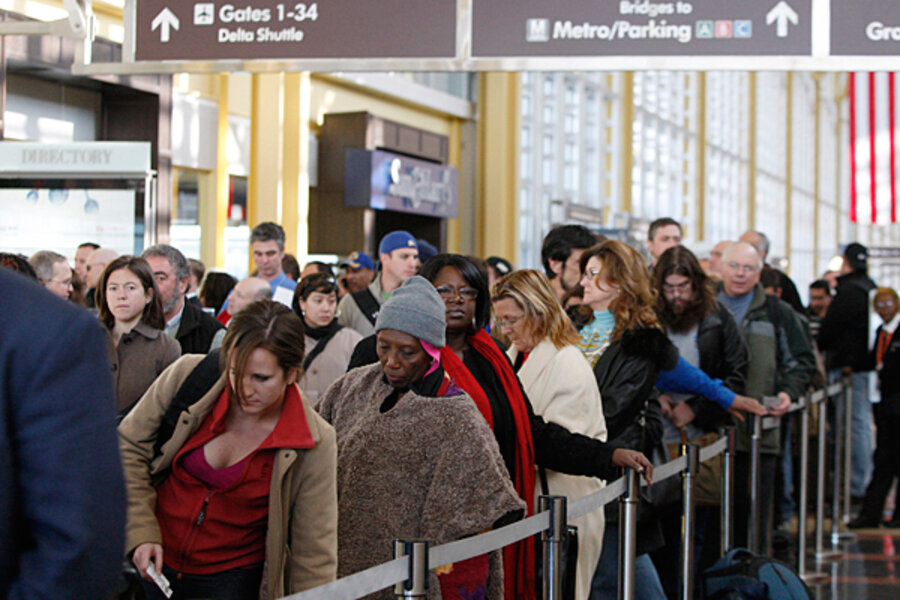Realistically, can intelligence analysts stop a terror attack?
Loading...
| Washington
More than eight years after the 9/11 attacks, Washington is again probing how US analysts failed to “connect the dots” leading up to a terrorist attempt – and how to do better in the future.
That’s the aim of a midafternoon meeting with President Obama and 20 top government officials who have been tasked with a review of the Christmas Day incident on Northwest Airlines Flight 253.
It’s an exercise Washington has launched before, most notably after the attack on Pearl Harbor in 1941 and after the Sept. 11, 2001, attacks. In both cases, investigators aimed to construct a timeline – who knew what, when they knew it, and what they did with what they knew – to identify missed opportunities and to propose fixes.
At least some of the post-9/11 fixes worked, say Obama administration officials. Threat assessments were available across agency lines – unlike in the run-up to the 9/11 attacks. The name of suspect Umar Farouk Abdulmutallab was on a broad terrorist database maintained by the National Counterterrorism Center (NCTC), which both intelligence and law-enforcement agencies could access.
But Mr. Abdulmutallab’s name was not elevated to a no-fly list or flagged for special notice. In retrospect, that appears to be a shortcoming. On Monday, the White House announced that terrorist databases have been scrubbed since the Dec. 25 incident.
Yet connecting the dots in hindsight doesn’t capture the issues facing intelligence analysts on a daily basis, these analysts say. They have a sea of data to go through – and finding and acting on the crucial bits can be a formidable challenge.
“The task that officials faced in this most recent incident was typical of the task they have to perform every day: trying to identify as significant a few fragments of information that are little different from the huge flow of reporting – most of which has nothing to do with any terrorist plots,” says former senior CIA analyst Paul Pillar, director of graduate studies at the Center for Peace and Security Studies at Georgetown University in Washington.
“In real time, the dots can be connected in innumerable, comparably plausible, different ways – most of them wrong,” he adds.
In testimony before a Senate panel on Dec. 9, Timothy Healy, director of the FBI’s Terrorist Screening Center, said that the center receives every day “between 400 and 1,200 unique additions, modifications, or deletions of terrorist identities.” Terrorist screening occurs anywhere from embassies or ports of entry to a police stop or the place where a gun is purchased.
To elevate a name from the NCTC’s Terrorist Identities Datamart Environment (TIDE) database to the more actionable Terrorist Watchlist requires “articulable facts” about an individual having ties to terrorist activities. “Mere guesses or inarticulate hunches are not enough to constitute reasonable suspicion,” Mr. Healy said.
The Terrorist Watchlist is made up of some 400,000 people. The no-fly list includes even stricter standards.
After the Christmas Day incident, Mr. Obama called on his administration to focus on two issues: improved screening for air travel and an upgrade to the US system for terror watch lists.
Earlier this week, the administration mandated stricter airport screening for citizens of 14 nations and those on flights originating or passing through them. The screening includes full-body pat-downs and more-intensive searches of carry-on luggage.
-----
Follow us on Twitter.





